Flights and combat sorties on the B-52: memories of a pilot
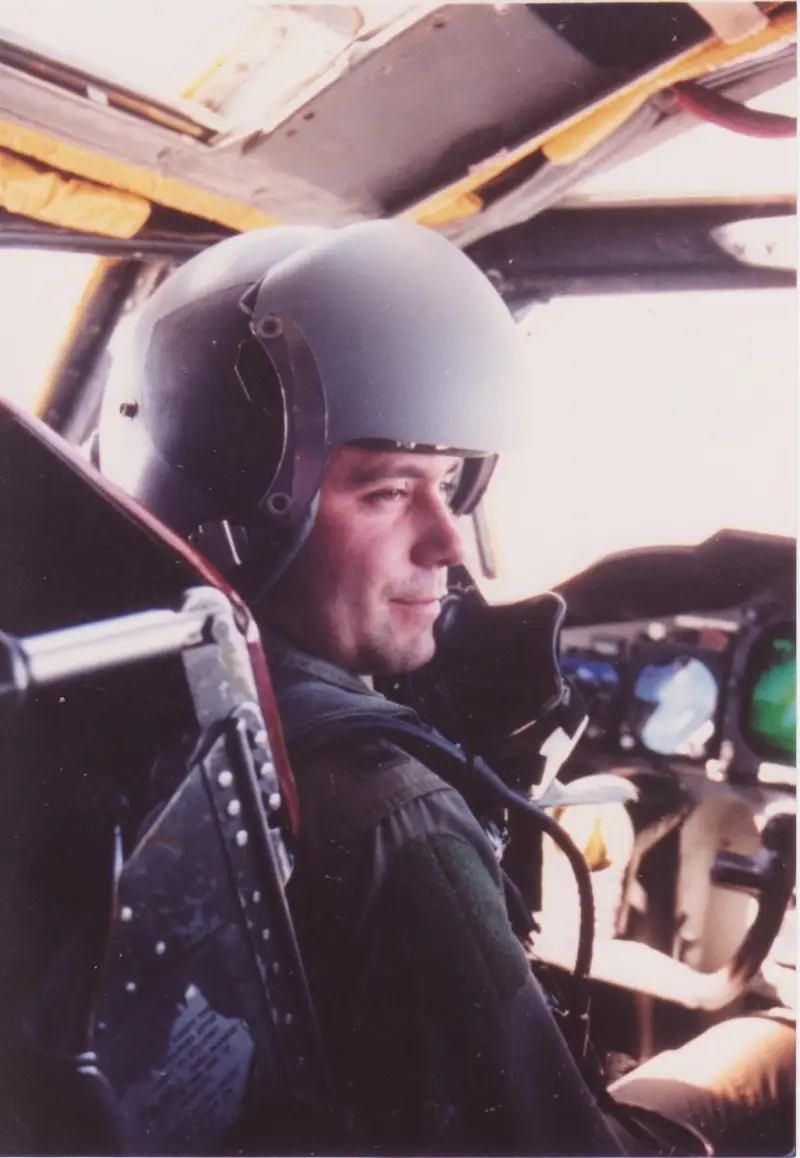
Recently, in Telegram, I came across discussions about overcoming air defense using the example of Operation Desert Storm, and there were memories of a pilot who participated in this “Storm”. I became interested, I dug around on the Internet, and eventually got to the original. It turns out that Telegram only provided a very short excerpt from the interview, which consists of two parts. The interview is dated 2016, so some things don't look quite the same as they once did. Nevertheless, here it is in its entirety.
Since its combat debut in Vietnam, the B-52 Stratofortress has caused more destruction than any other aircraft. Keith Shiban flew the 52 on nuclear deterrence missions and flew combat missions over Iraq. We talked to him about flying and fighting in this formidable vehicle of American foreign policy.
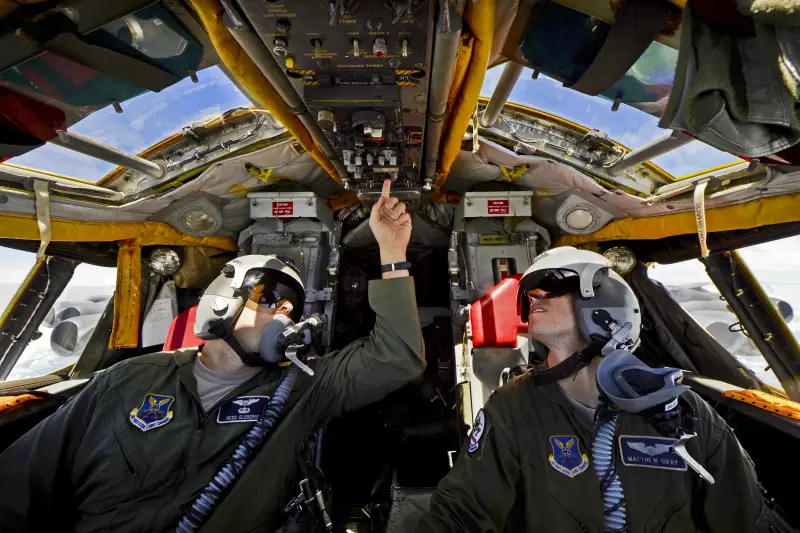
Part 1
B-52 flights and combat missions
What were your first impressions of the B-52?
I was amazed by its size. You don't realize how big it is until you get up close to it. It looks powerful, even sinister, due to the dark camouflage and ECM blisters throughout the body. I wouldn't call it a "beautiful" airplane. This is a specially created combat weapon, and it looks the part.
I just finished my T-38 orientation and it was like jumping from a Corvette to an 18-wheeler. I found that it wasn't difficult for me to fly the B-52, but it was very difficult to do it well. Nothing happens fast there and you have to deal with a lot of inertia. Pull back the yoke and there is a noticeable pause before the plane begins to roll. Center the yoke and the plane will turn a little more. After my first training flight, I remember looking back at this huge beast sitting on the tarmac and thinking, “Damn it, did I land this?”
Air refueling was the hardest part for me to master. As an aircraft captain, this is where you make your money. If you fail to get fuel from the tanker, you will not be able to complete the mission. It wasn't until my seventh or eighth training mission that I was really able to stay connected to the tanker. The short-tail B-52s (G and H models) have a feature called dutch-roll. In general, this is not noticeable, but only until you find yourself directly behind this flying tanker truck.
Dutch-roll or Dutch step is a complex aircraft behavior consisting of simultaneous roll and yaw in different directions. The origin of the term is unknown, but is most likely related to speed skating (Wiki).
You have to constantly work the helm just to stay on an even keel while refueling in mid-air. Once your muscle memory locks in the movements you want, it will become second nature, but it took me a while to figure it out. And even then it is still a difficult task. Receiving 100 pounds (000 tons) of fuel meant being "strapped" to the tanker for 45 minutes or so. Afterwards I felt like I was working out at the gym.
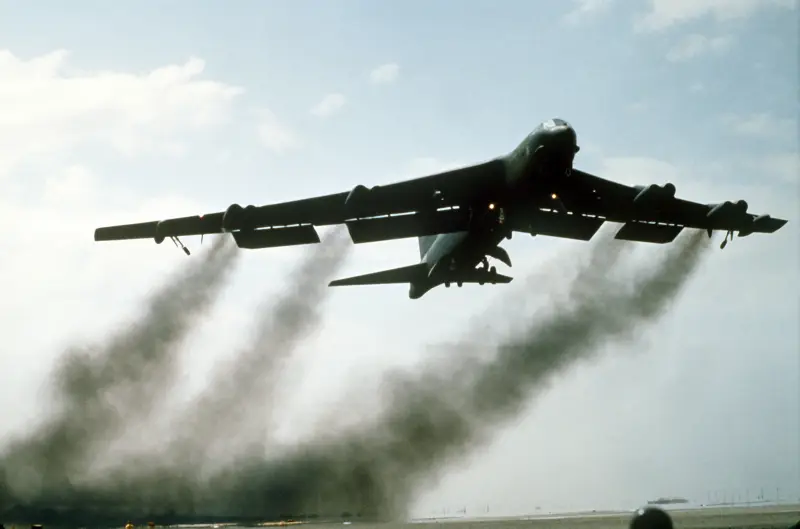
Another big challenge was managing such a large crew. The B-52 is very much a navigation aircraft. I've often joked that I'm just a voice-controlled autopilot for navigators.
In training, I was taught that the pilot-in-command's job was to "fly the aircraft and make decisions." I had to constantly process information coming from other crew members and decide how to respond. My offensive team may tell me to take one course to get to a goal, but my defensive team may tell me not to go that way because there is a threat there.
You live or die as a team. Even if the pilot is Chuck Yeager (which I am not), it won't do much if the radar navigator can't hit the target, or the electronic warfare officer allows you to get shot down en route to that target. It was a team effort the whole way. The captain of the aircraft usually gets all the credit, but I was only as good as the rest of my crew. Fortunately, I had a very good team.
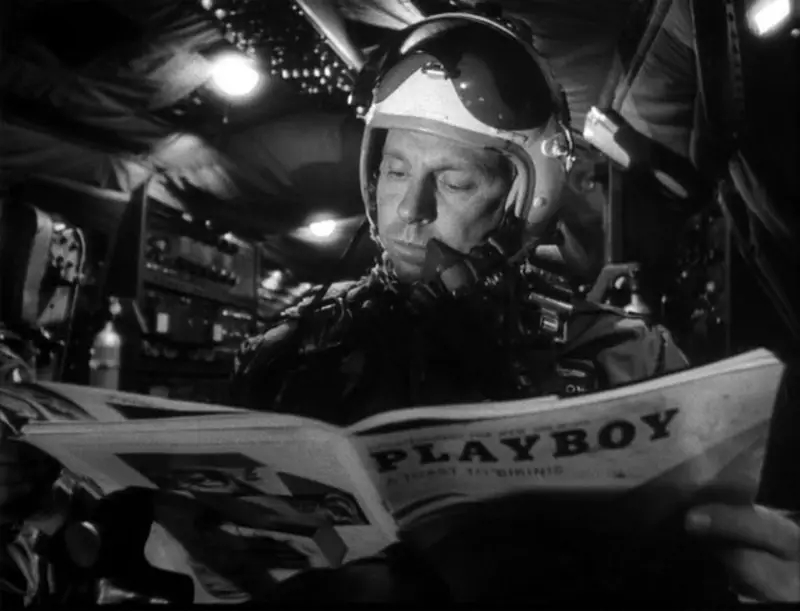
How do the B-52 crews rate Dr. Strangelove - was it realistic?
This refers to the 1964 film Dr. Strangelove or: How I Learned to Stop Worrying and Love the Bomb directed by Stanley Kubrick. Anti-militaristic black humor.
Dr. Strangelove was constantly on the alert. I've seen it enough times to remember the script. Kubrick got a lot of things right in this film, especially considering that the Air Force was very secretive about the B-52 at the time. My main criticism would be that the bomb drop at the end takes up almost a third of the film, when in fact, not much time passes from the release command to the bomb coming out.
Also, I think they tried about eight different ways to open the bomb bay doors. In fact, there is a manual release cable that navigators could simply pull to open the doors. But hey, it's a movie. They have to make it dramatic. It's probably still my favorite movie of all time.
What advice would you give to new B-52 crews?
Be proud of yourself. You're flying to pieces stories. Even to this day, when we want some other country to know we mean business, we deploy the B-52.
What equipment did you dream of having when you were in the B-52?
I would like more in terms of long range weapons. In 1991, we were still primarily using high explosive bombs, as in World War II. To do this, it was necessary to fly directly over the target. You can avoid most threats on the way to and from your target, but anything that needs to be bombed will probably be protected.
When you're on a combat course, you can't do much evasive action because the whole reason you're there is to hit the target. Even if you were not shot down, but simply made to miss, this means that you did all the work in vain.
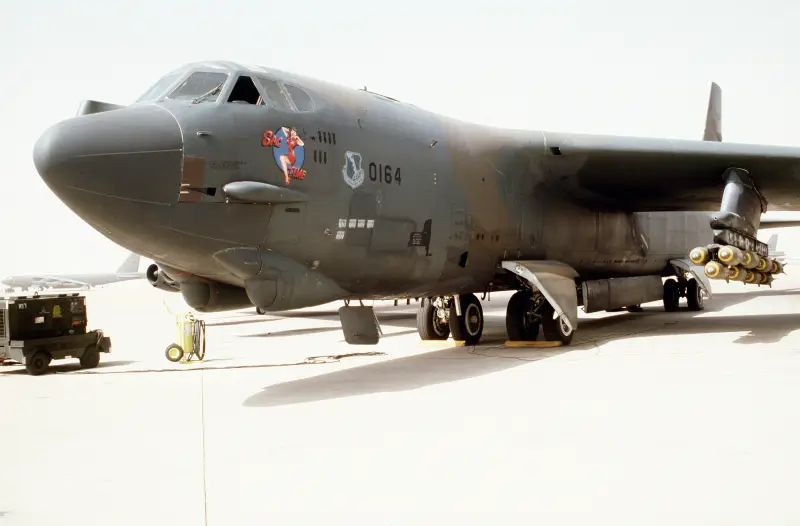
Please tell me about your first mission during the Gulf War.
My crew was deployed to Diego Garcia in August 1990 as part of Provisional Bomber Wing 4300. I remember getting a phone call early on Sunday morning: “Be here in 4 hours with your things. You are leaving for an indefinite period." After seven months of living on a tiny atoll in the Indian Ocean, the part of me that wasn't scared to death was ready to just get the whole mess over with so I could get home quickly.
It was around 17:00 pm when we received the notification. I know this because the cafeteria opened at 5 and I was just about to go get something to eat. Someone knocked on the door of the room the four of us shared and said, “You're coming.”
I forget how much time we had to get ready, but I know I went to the cafeteria and tried to eat something. My stomach was in knots, so all I could do was eat some salad and drink some iced tea. At the appointed time, we were loaded onto a bus and taken to the airfield. Security gave us an escort with lights and sirens on, which I thought was pretty cool.
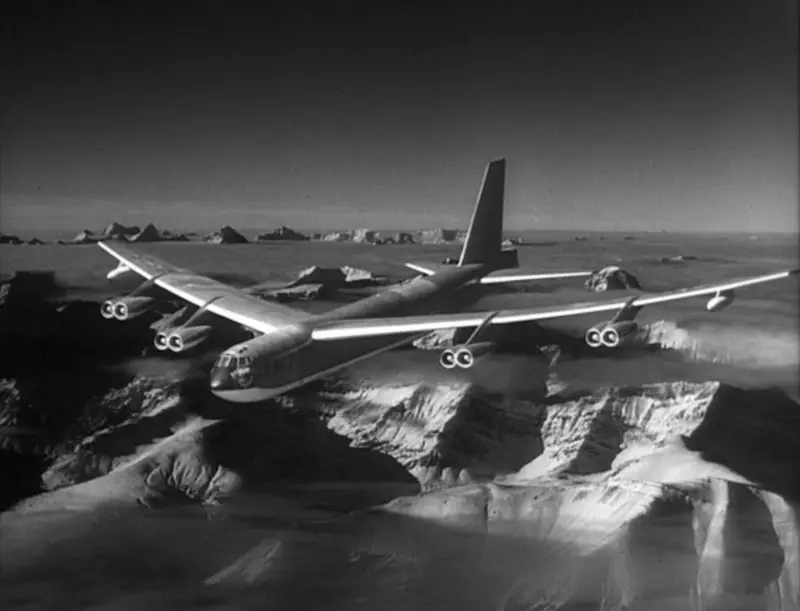
We had been briefed earlier on what our goal would be for the first night. We were supposed to strike one of the forward-based Iraqi airfields. Five of them were located about 25 miles from the Saudi Arabian border. Three B-52s were assigned to each airfield, plus we had several “spare” ones in case one of the planes broke down along the way.
We were taken into the auditorium for instructions. The commander's pep talk basically boiled down to this: "Don't stick your nose into the ground and do their job for them." This is actually good advice. The briefings were quite short because we already knew in advance what the goal was. We had done several rehearsals against several islands in the Indian Ocean, so we were quite confident in our abilities.
I don't remember exactly when we took off, but by the time we actually got to the plane, it was already late. More than 20 bombers and tankers took off, all exactly on schedule, without a single radio call. Each aircraft was assigned a time to start the engine, taxi, and take off.
A fully loaded B-52G is a slow beast and requires a large runway to get airborne. The runway at Diego was relatively short by SAC (Strategic Command) standards. Only 10 feet, as I recall. We had used most of it by the time we took off.
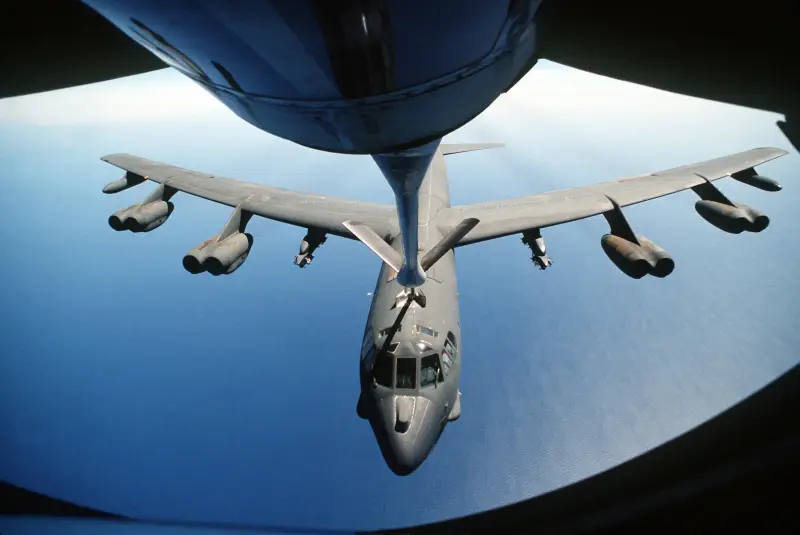
Just then a nasty series of heavy downpours hit the area and we flew through some of them. I remember that I had quite a lot of bumps due to bad weather. Shortly after we reached level flight, we refueled for the first time in the air.
Two mid-air refueling stops were planned on the way to the Arabian Peninsula. The G model was slightly underpowered, and the additional drag from the bombs on the underwing pylons made the situation worse. Sometimes I adjusted the speed, trying to stay connected to the hose.
A good tanker crew made you look good too. If they were fussing around a lot trying to stay in line, it could make the job much more difficult. If their autopilot wasn't working, it would have been even more difficult. The air wave from our bow tip could throw the hose funnel to the side, and if it starts to throw around, it will greatly complicate the situation. If one of us lost control, it could cause a chain reaction. In general, there are many nuances there.
Somewhere along the way to Saudi Arabia we found time to put on our survival gear and sidearms. As I recall, we had body armor, but I think we strategically placed it around the cockpit rather than wearing it on ourselves. We decided that anything that could hit us would go through the floor first.
You probably want to know how I felt at that time. I'm not a particularly brave person. I always felt very scared a few days before the assignment. But as soon as I got on the plane, I was fine. This was my comfort zone. No more worrying about whether something will happen or not. Just do your job.
By this time I was very confident in our ability as a crew to accomplish this task. We had done a lot of training six months before and I knew I could fly the plane to its limits. Knowing that you will probably be shot at in a few months gives you extra incentive to train hard.
By the time we appeared over Saudi Arabia, it was already dark. The sky was filled with the lights of aircraft preparing to attack. I remember commenting on this right before I fell asleep.
Now I would say that I was such a warrior with nerves of steel that I was able to fall asleep on the way into battle, but I think at that point I was just exhausted. I hadn't slept most of the day and combined with the stress, I think I just passed out.
The next thing I knew, my co-pilot woke me up and told me we needed to prepare for a low altitude flight. This included duct-taping all the lights in the cabin and gluing green chemical bulbs under the dash to use as night lighting. Very high technology.
Back then we had red cockpit lighting, which made it impossible to use night vision goggles. These goggles were not our primary tool for low altitude flying, but they were a complement to the terrain following radar and thermal imager that were built into the aircraft. The night vision goggles were attached to the visor of the helmet, and the battery pack was attached to the back of the helmet using Velcro. The whole assembly was heavy and could break your neck if you ejected, so you had to remember to remove it before leaving the car.
Our formation at high altitude was linear, 2 miles long, with each aircraft positioned 500 feet above the one in front. Having descended to a low altitude, we entered what was called a stream. The bomber stream was usually positioned so that about a minute passed between two successive aircraft, which is about six miles at the speeds at which we were flying at low level.
We descended into Saudi Arabian airspace to avoid being detected by Iraqi radars. Our tactics at the time were to avoid known threats. There's no point in messing with an anti-aircraft missile battery if you can just bypass it. Of course, there is something left somewhere that you don't know about.
On the way to our target, we flew at an altitude of 300 to 500 feet (90 to 150 meters). I remember it was pitch black that night and the glasses didn't really help me much since they need at least some ambient light to work. However, they picked up all the anti-aircraft fire and probably made it seem like it was closer than it actually was.
I think they were just trying to fill the air with lead and hope someone would fly through it. I remember seeing a ZSU-23 spitting out tracer bullets like a fire hose. Luckily it wasn't near us because one of them could ruin your day. I saw a lot of heavy gunfire, 57mm and larger. I wasn't so worried about them since they had a very low chance of hitting anything.
I distracted myself by telling the crew what I was seeing, pointing out that the shooting was either outside the range or not at us. It's hard to tell what you see at night. Was that fire I just saw a rocket or just a truck headlight?
The bombing attack was planned as a "multi-pronged attack." Three planes from our flight attack from three different directions to confuse the defense. Usually the interval between planes was sixty seconds, but in this case we reduced it to 45 seconds.
The idea was to minimize the time spent on the target. Most importantly, we had to get this timing down to absolute precision, otherwise our bombs might blow up the next guy behind us. The plan allowed no room for error.
My plane was loaded with fifty-one cluster bombs filled with mines. The other two planes carried British runway destroyer bombs, which we called UK1000. Bombs will leave craters in runways and taxiways, while mines will make life difficult for anyone trying to repair them. The bombs also had a variable time delay, so some would dig a hole and then explode a full day later.
To drop cluster bombs, we would have to rise to an altitude of up to 1 feet (000 meters), passing across the target. This is not a good height. You want to be either very short or very tall. The flight's other two aircraft could descend to an altitude of 450 feet (500 meters). We were the first to rush over the target, so that at least we would have a surprise on our side.
The drop itself was uneventful, except that we couldn't see anything. Once the bombs started going off, things got interesting. Through my glasses I saw “Flash! Flash! Flash! Flash!" And I thought, "Oh shit, they're shooting at us, and there's not a damn thing I can do about it until we drop all the bombs."
As soon as the bombs ran out, I made an aggressive gun jink maneuver. This involved rapidly rocking the plane in multiple directions. At the same time, I lowered the nose of the plane to the ground again. We began to quickly pick up speed. Our top speed was 390 knots, but I'm sure I saw 430 on the instrument (630 and 700 km/h). At that moment the plane was almost ready to break the sound barrier, so it seemed to me.
The faster we flew, the more he wanted to bury his nose. I had to work to turn him up a little and make up for it. Meanwhile we skulked low above the ground in the night, probably posing a greater threat to ourselves than anything the enemy could do.
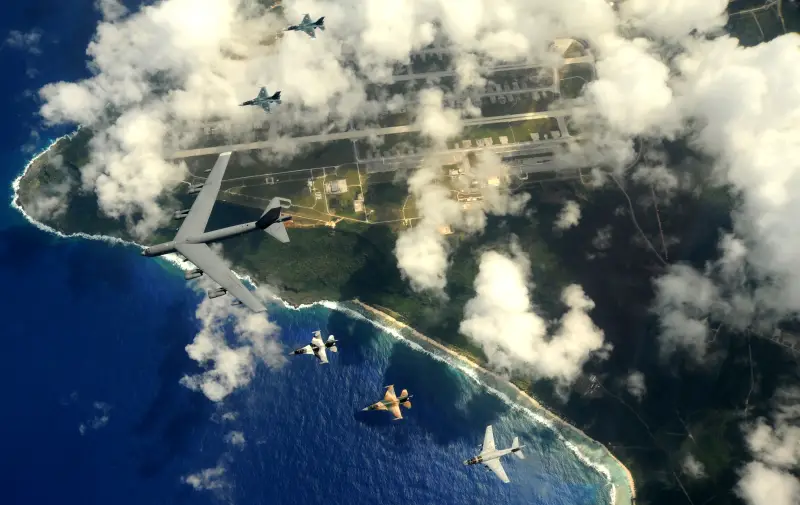
What I saw that night was most likely our own cluster bombs exploding, scattering mines. The interval between flashes was just right to make it look like a 37mm anti-aircraft gun. In hindsight, I now realize that we weren't shot at, but I didn't realize it at the time.
In the confusion, after passing over the target, we turned the wrong way and ended up having to turn 270 degrees to get back on course. Meanwhile, two other bombers did their job, followed by a raid of F-15Es that destroyed the fortified shelters.
After that I was excited all the way to the border with Saudi Arabia. According to the plan, we were supposed to land at Jeddah International Airport. I think we had to circle the airfield at least twice because the traffic was so busy.
Once we finally landed, several guys in silver hazmat suits checked the outside of our plane for chemical contamination. The repairmen then checked us for battle damage and found none.
Finally we reached the plane's parking area. I remember sitting on the ramp in Jeddah for a very long time, waiting for someone to come pick us up. We didn't really care, we were just happy that we had completed the task and were still alive.
Tell me something that most people get wrong about the B-52.
Most people assume that something as big as the B-52 must be roomy inside. It's actually quite crowded there. Most of the free space is taken up by either fuel tanks, bombs, or electronics. The only place where you can safely stand upright is the ladder between the upper and lower compartments.
Unlike an airliner, it is also very noisy. We had to wear headphones or helmets at all times to protect our hearing. It was impossible to talk “across the cabin”, as we do on an airliner. Everything must be said over the intercom.
This is not the most convenient place to spend 12 to 16 hours there. Even training missions will completely exhaust you physically. Strategic Command likes to say, “You have to be tough to fly heavyweights.”
What's one thing most people don't know about the B-52?
I don't think our role in the Gulf War has ever been widely publicized. Especially the low-altitude strikes that took place in the first three nights.
During the Cold War, were members of the B-52 aircrew community confident that they would survive an attack on the USSR?
This is the main question, isn't it?
Luckily, we never had to find out.
Soviet air defense was quite powerful. Our ECM package in the G model was not as good as in the H model. There were some newer Soviet missiles, such as the SA-10 (S-300), that we simply did not want to face. We were also afraid of colliding with the MiG-31 even before we reached Soviet territory.
However, you have to understand that by the time we got there, both sides would likely have been firing ballistic missiles at each other for at least eight hours. There may be little left of their air defense to worry about.
We were on nuclear alert - and how do you reconcile personal ethics with the knowledge that you could launch a nuclear strike?
We were so well trained that we would probably already be halfway to our goals before we even thought about what we were doing. We used to joke that if something like this happened, we would turn south and make Jamaica the next nuclear power, but that was just a joke. Most of us didn't think we'd have to do this.
The whole reason why Strategic Command existed was to prevent war with the Soviets. If things got that bad, we'd probably be dodging nuclear explosions when leaving US airspace.
Instinct suggested that we should strike back at them with everything we had at that moment. Still, it was a sobering experience to be on board a warplane on alert with sixteen nuclear warheads on board. Quite a big responsibility for a 27-year-old aircraft commander.
What were your favorite and least favorite flights/missions in the B-52?
I liked doing things tactical, like flying low and playing with guys in fighter jets. The touch and go flights were fun, but I think Strategic Command sometimes overdid it. We would do an 8 hour training mission and then have a 3 hour transition period. We were tired from the night flight, and they wanted us to practice landings from 1 to 4 am.
Why do you think the B-52 remained in service for so long?
In some ways, it is such a versatile aircraft that it can be adapted for different missions. It can deliver a large payload over a long distance and can remain in the air for a long time, selecting a target or waiting for a command. One thing that people don't always think about is that it produces a huge amount of electricity from its four generators. This allows them to keep cramming more electronics into it.
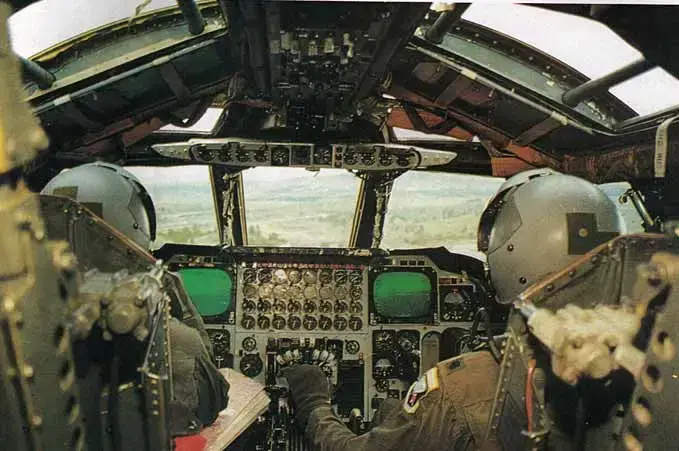
What do you think about its Russian counterpart, the Tu-95?
When the Russians do something that works well, they stick with it. I had the opportunity to climb inside one of them. Like the B-52, it was a mixture of very old and very new technology. It is smaller than the B-52, about 2/3 its size. It is extremely fast for a turboprop aircraft and also very efficient.
Turboprop engines produced enormous amounts of noise and vibration. I can only imagine that this caused a lot of trouble for the crews over time. I don't think they were anywhere close to what we did in the B-52 in a tactical sense. And I don't believe they ever intended to use the Tu-95 to fly at low altitudes, as we did.
Have you ever flown low altitude in a B-52?
Low altitude flying was our bread and butter at the time. In the late 1980s we were still training to penetrate Soviet air defenses. During the day it was a lot of fun, at least for the pilots. I don’t know how the other crew members managed to survive it. Sitting in the dark, in a cramped cabin, being shaken and rocked on a hot day is a sure way to airsickness.
B-52 navigators are very dedicated people. Their ejection seats were shooting down, which doesn't inspire much confidence. At night it was very difficult.
Our systems were good at altitudes up to 200 feet (61 meters) on flat terrain and I think between 300 and 400 feet (91 to 122 meters) on rough terrain.
Keep in mind that our wingspan was almost 200 feet (61 meters). Flight at night at low altitude required enormous effort from the entire team, especially from the pilots and navigators. And on the B-52, all this was done manually. Unlike the B-1 and F-111, we only had a ground proximity warning radar, which was not connected to the autopilot.
Imagine rushing at 360 knots (666 km/h) through the mountains in the middle of the night. Strategic Command officials once interviewed a Soviet MiG-29 pilot who had defected. He was asked, “Do you think you could intercept a B-52 flying at 300 feet at night over rough terrain?” He said, “No way in hell on earth.”
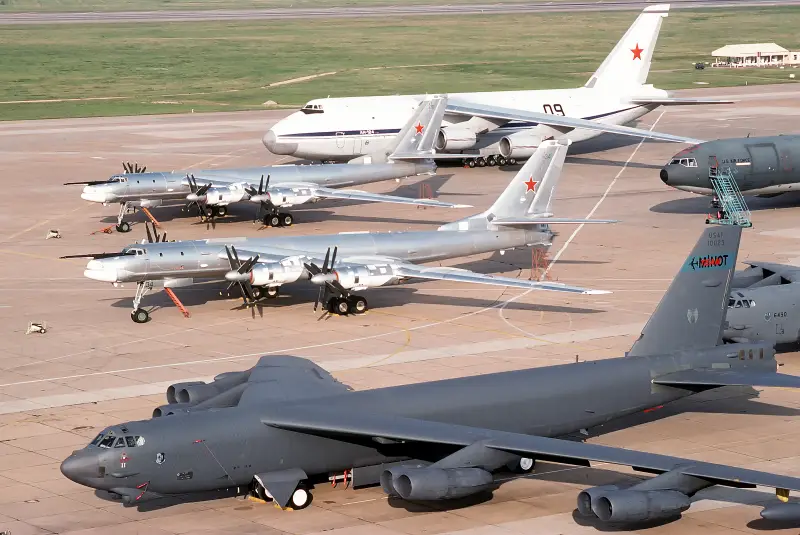
Part 2
A B-52 pilot talks about modern fighters
(I remind you that it was 2016, so it is interesting to compare his previous conclusions with reality).
F-22
This thing has been in use for 11 years? Damn, I'm getting old.
I'll admit, I was a little skeptical about the F-22 at first. But talking to the people who worked on this program, as well as the people who flew it, helped me come to my senses. Apparently it really is as good as they say.
I'm told that four F-22s, if they're fully wired, can shoot down as many F-15s as are thrown at them until they simply run out of missiles and go home. He will notice you long before you see him, and the first sign that he is nearby may be an AMRAAM missile flying towards your face. Unpleasant.
Ironically, this is how we imagined dogfights in the 50s and 60s, when supersonic jets launched radar-guided missiles beyond visual range. It just took a while for technology to catch up.
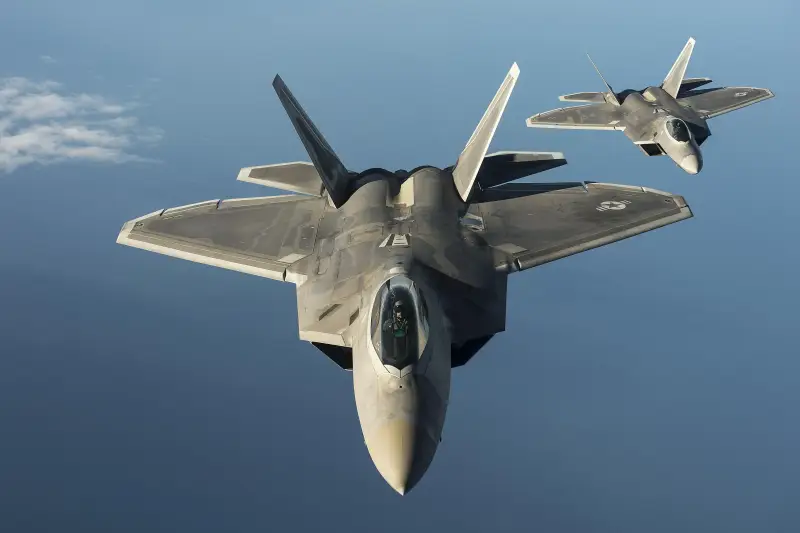
The only downsides that I know of are that the F-22 is expensive to operate and the number of missiles it can carry within its hull is limited.
To remedy the second problem, there is talk of other missile-carrying platforms that the F-22 could target and launch remotely. It's not as far-fetched as it seems. Today, all aircraft communicate with each other, and new missiles can be first fired and then aimed at their target.
Other downsides to the Raptor include its limited range relative to the enormous weight of propellant it carries, the lack of a helmet-integrated guidance system, and the use of rare and outdated electronic components. The man-machine system, advanced at that time, was inferior to the F-35 and Gripen E/F.
Sukhoi T-50/PAK FA
Russia once produced relatively cheap fighters such as the MiG-21 in huge quantities. Today the T-50 is in every way as complex and expensive as its Western counterparts. So expensive that Russia is developing it jointly with India (India is no longer working on the FGFA. - Author's note) to cover part of the costs. This is similar to how Western Typhoon fighters were developed.
The T-50 has several interesting features. The engines will have thrust vectoring nozzles similar to the F-22, but which can move on both axes. This will allow them to use thrust changes for yaw and roll, unlike the F-22, which can only affect pitch axis.
The T-50/PAK FA looks impressive on paper, but it's still no F-22. Its EPR is several orders of magnitude greater than that of the F-22. It is more stealthy than the 4th generation fighter, but calling it a true 5th generation fighter would be a stretch.
Engines, which have always been a problem in fighter aircraft development, seem to pose some challenges for them. The T-50 will initially fly with a variation of the Su-35 engine, itself a derivative of the Su-27 engine that has been around for a long time.
Given the current situation in the Russian economy, they now plan to build only a dozen of these aircraft between now and 2020. This is very different from the original plan.
Thus, it is a very expensive aircraft that may not live up to expectations. Where have I heard this before? However, even the fact that they are building something like this shows how far they have come.
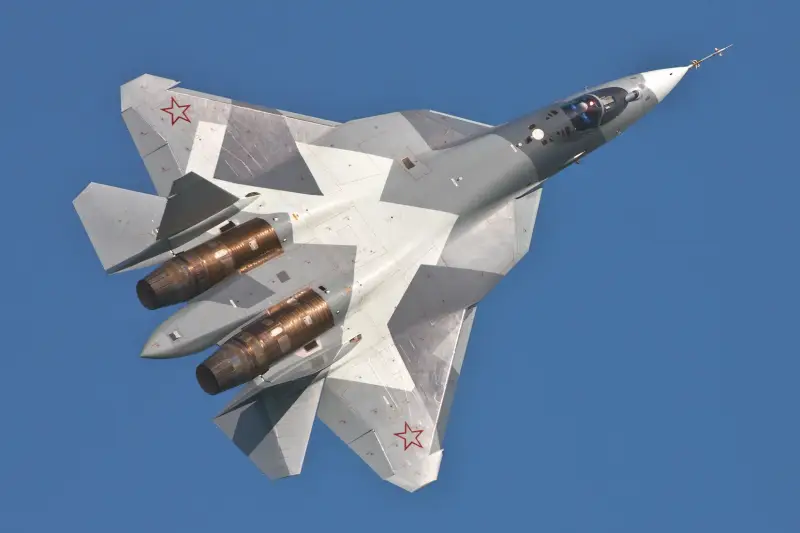
Chengdu J-20
Gone are the days when China could only create copies of Soviet designs. Now they themselves have some pretty advanced developments. The J-20 is one of them and could enter service around 2018. The J-20 Black Eagle is something of an enigma. We're not entirely sure what his intended role is. And if we do know, we don’t say anything. China is certainly keeping quiet about this.
It is large, stealthy and appears to have been built with range and payload in mind. This leads some to believe that it is primarily a long-range strike aircraft. However, it also appears to be designed for maneuverable combat, with its canard aerodynamic design and variable thrust vectoring nozzles in mind. So perhaps it is more of a heavy air superiority fighter. Or maybe it's both.
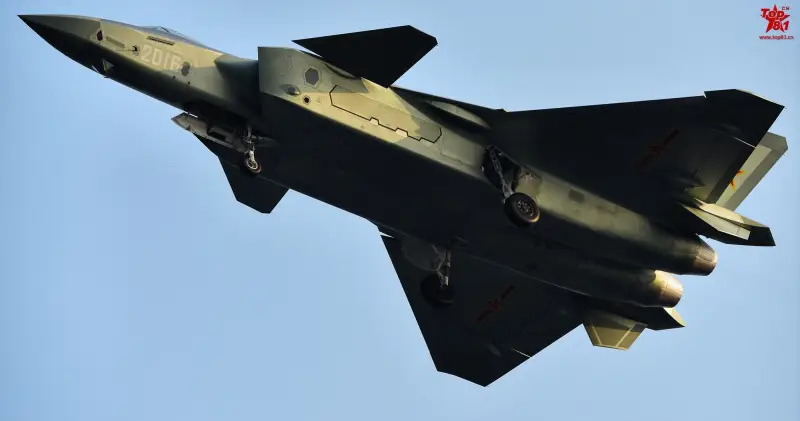
The main question seems to be: can the Chinese develop a suitable engine for it?
It is currently powered by the WS-10 engine, a derivative of the commercial CFM-56. It is assumed that the production model will receive a much more powerful WS-15 - provided that it works. To compete as a fighter for air superiority, it will need a more powerful engine.
I'll go out on a limb and say that the Black Eagle (cool name) probably won't compare to the F-22, but it will definitely pose a threat to US and allied fourth-generation fighters in the Pacific. Its combination of range, speed and stealth would make it a serious threat to high-value targets such as tankers and AWACS systems. Without tankers, fighters like the F-22 and F-35 would have a difficult time operating over the vast distances of the Pacific Ocean.
Lockheed F-35 Lightning II
The F-35, depending on who you ask, is either the latest and greatest in fighter technology, or an overburdened, expensive and underperforming testament to the defense industry's bloated appetites. If you're looking for a definitive answer, I'm afraid I don't have it.
What everyone can agree on is that it is expensive, behind schedule and very controversial. I can confidently say that this concept tries to do too much with one aircraft.
The F-35 will be built in three variants to replace the Air Force's F-16 and A-10, the Navy's F/A-18 and the Marine Corps' AV-8B Harrier. This is quite a difficult task.
Why are we doing this?
The main reason is that air defense is getting really good. So good that anything without stealth may be tactically obsolete within a few years, at least in a high-intensity conflict.
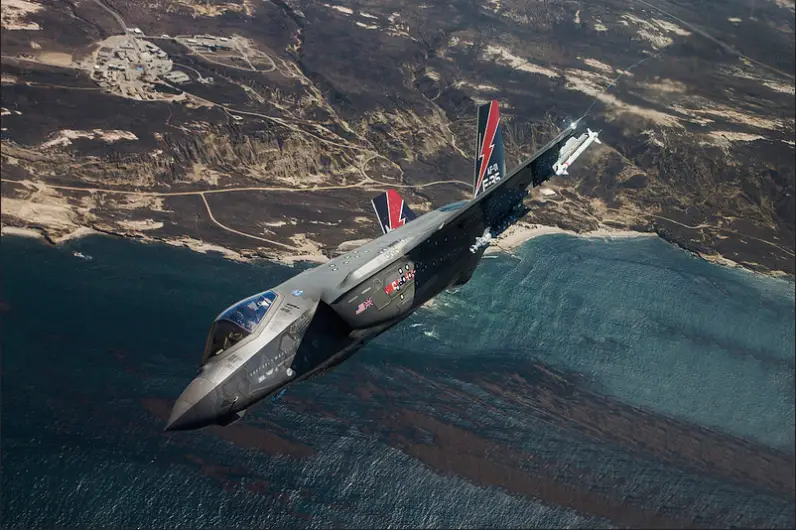
I would say the most important feature of the F-35 is the electronics. The F-35's sensor integration is said to be even more advanced than the F-22's.
Detractors of the F-35 say it is too expensive, too slow and cannot defeat the "legacy" fighter in a visual dogfight.
An F-35 proponent will say that if the F-35 ever finds itself in a dogfight, something has gone horribly wrong. Keep in mind that the F-35 is not designed for air superiority. This is a multi-role aircraft. Perhaps a better description would be an attack aircraft that can defend itself if necessary.
I remember being told back in the 1980s that the F-15 and F-16 "won't work" because they were too expensive and too complex. Obviously this turned out not to be the case. I think that someday the same can be said about the F-35, but only time will tell.
Generation 4.5 aircraft
They are sometimes described as generation 4.5 or "generation four plus" aircraft. This means that they have most of the hallmarks of fifth-generation aircraft, with the exception of stealth.
Depending on your point of view, this makes them either a more economical choice than expensive stealth aircraft, or they will simply have excellent situational awareness of what is about to kill them.
Dassault "Rafal"
I admit that I'm a bit of a Francophile, so that's reason enough for me to like the Rafale. Plus it's a beautiful airplane, and that must mean something.
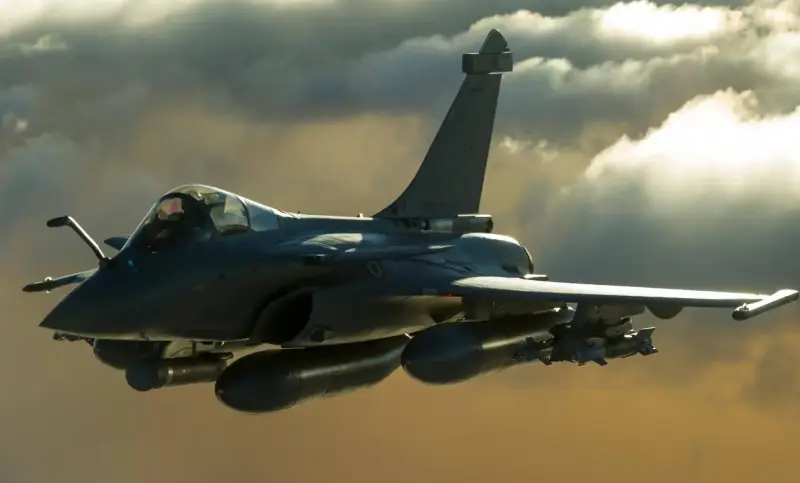
The Rafale came about when the French pulled out of the Eurofighter program and decided to go their own way. It sounds very French.
The Rafale is often compared to the Eurofighter Typhoon, especially since both compete heavily for export sales. Which one is better? I think it's like asking which car is the best. It depends on what you want it to do.
As far as I can tell, the Rafale is better than the Typhoon for strike missions against ground targets. It is reported to have very powerful electronic warfare equipment, allowing it to operate in locations where stealth or early SEAD (suppression of enemy air defense) programs might otherwise be required.
Conversely, the Typhoon is reported to perform better in the air combat role due to its superior radar (probably not the case with AESA-equipped Rafales) and digital communications capabilities.
Currently, the Typhoon is equipped with more advanced air-to-air missiles, but the French will soon equip the Rafale with the same missile (MBDA Meteor). For now, Rafale has to make do with the short-range MICA missile.
Eurofighter Typhoon
The Typhoon is a joint venture between the UK, Germany, Italy and Spain. This shows how expensive modern fighter jets are. It would be prohibitively expensive for any European country to develop this aircraft on its own.
I don't think the Typhoon is as beautiful as the Rafale but it has a very futuristic look. There's something about those rectangular air intakes and downward sloping front wings.
I'm surprised Germany bought into the Typhoon name since it was a British WWII fighter (actually they didn't for that reason - it's known as the Eurofighter in Luftwaffe service - Auth.).
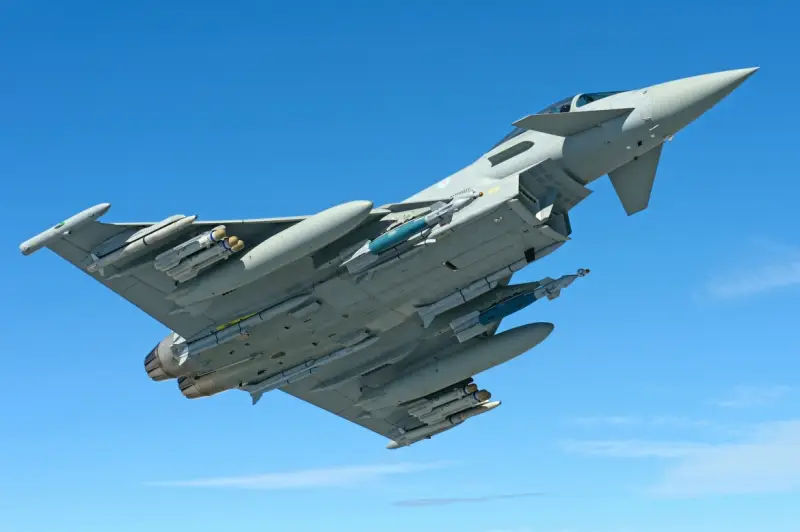
Of course, I haven't flown any of them, however, if anyone wants to take me for a ride, I'm ready. I'll try not to throw up there, honestly.
The Typhoon's list of characteristics reads like the F-22, minus the stealth. Supercruising potential. Extremely maneuverable, advanced radar (it is effective even with mechanical scanning) and sensors, an improved data link.
It even has voice recognition like my phone, but I don't use it because I'm old. Besides the fact that it's expensive (and what isn't these days), it sounds very impressive.
Of course, a number of countries have decided to purchase them. If you look into the whole Anglo-French rivalry that has been going on since time immemorial, the Typhoon is vastly superior to the Rafale.
Su-35 makes me glad I retired
.It used to be that Russia built cheap, relatively simple fighters in large quantities. As they say, “quantity has its own quality.” Today they build very modern (and expensive) aircraft that are close in capabilities to their Western counterparts.
The Su-35 is the latest modification of the tested and proven Su-27 Flanker fighter. In terms of performance, it compares very well with aircraft like the Typhoon and Rafale. Its avionics, while an improvement over older Russian aircraft, are likely still not up to par with the latest Western systems.
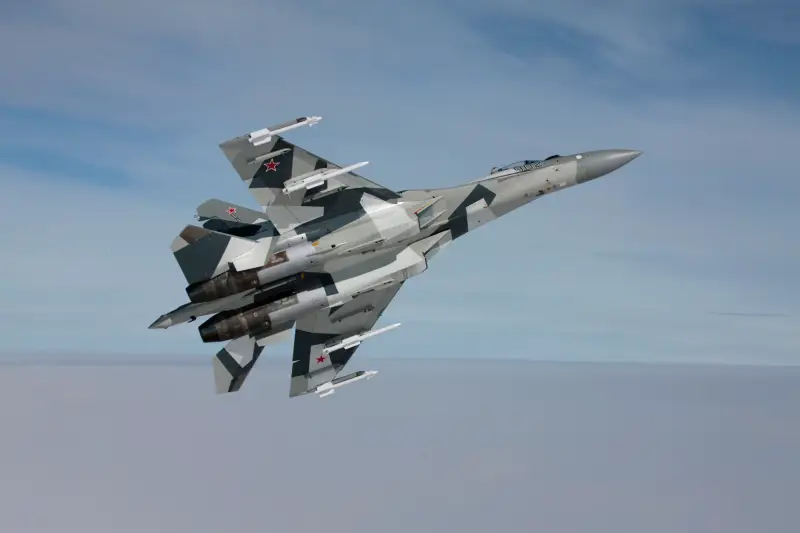
Although it boasts exceptional maneuverability, especially at low speeds.
What really impresses me about the Su-35 is the number of missiles it carries. With up to 12 air-to-air missiles of various types on board, it can pose a serious threat.
One likely tactic for the Su-35 would be to fire a volley of missiles with different homing heads at you. Give afterburner to maneuver against a radar-guided missile? Did you know that there is a missile with an infrared head next to it? Turn on the interference source? An anti-radiation missile will target your signal. I'm glad I retired.
Another disadvantage of the Su-35 is that Russian aircraft are actually not as reliable as you think. This, at least, is the experience of the Indian Air Force, which operates both Russian and Western aircraft.
Saab JAS-39 Gripen
Sweden may be officially neutral, but don't confuse that with weakness. It’s more of a “stick your nose in here and we’ll bite it off” kind of neutrality. As such, they have always maintained a very capable air force.
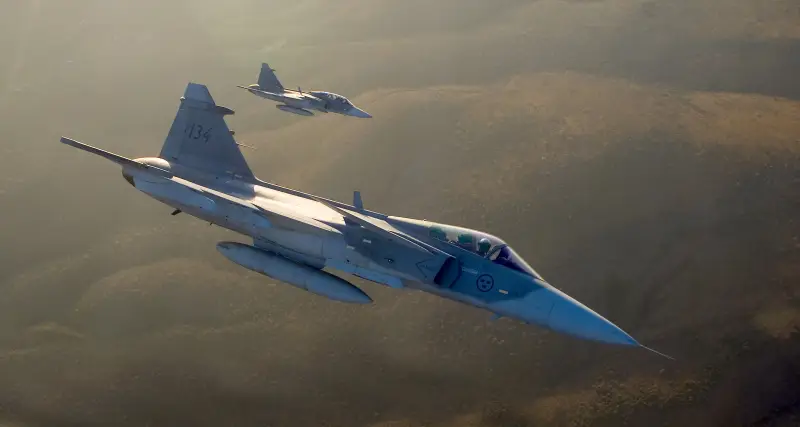
Saab has built some impressive fighter jets over the years, and the Gripen is certainly impressive. Think of it as a "poor man's Typhoon." It can do most of what the Typhoon or Rafale can do, and at about half the cost. It is cheaper to operate than even the “inexpensive” F-16.
It also has the advantage of being able to operate from roads and simple airfields.
In a "for the money" competition, the Gripen seems to be the clear winner. What would you prefer - three Gripens or one Typhoon or Rafale?
Chengdu J-10
Vigorous Dragon (sounds like a superhero) is China's first domestic fourth-generation fighter.
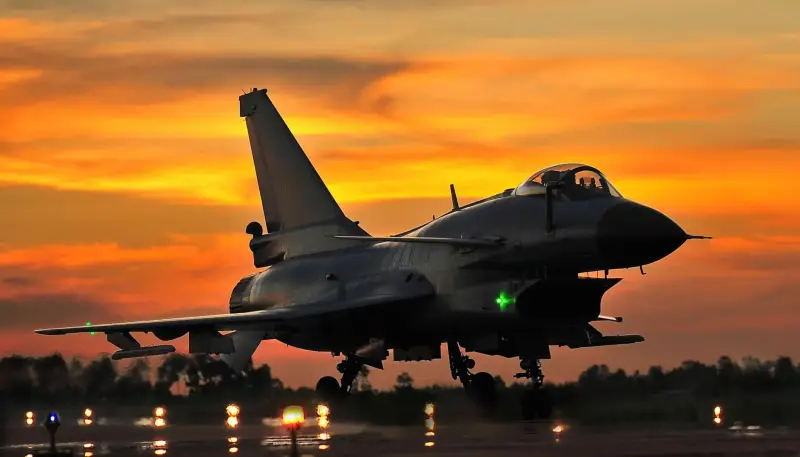
How homey this dish is depends on who you ask. Some argue that the aircraft has roots in the Israeli Lavi and the American F-16. The Chinese claim that it grew out of their own remarkable J-9 project. Who knows?
It's actually a bit like Lavi, but different countries often come to the same conclusion on their own. This doesn't mean that we are the only smart people in the world. It's hard to guess how effective the J-10 is, since the Chinese are pretty secretive about their systems. On paper, it appears to be in roughly the same class as the F-16C.
Worthy fighters
The F-15/16/18 and A-10 have been around for a long time, but continuous modernization keeps them relevant. It's amazing how good the F-15 has been for so long. We're talking about a plane that first flew in 1972!
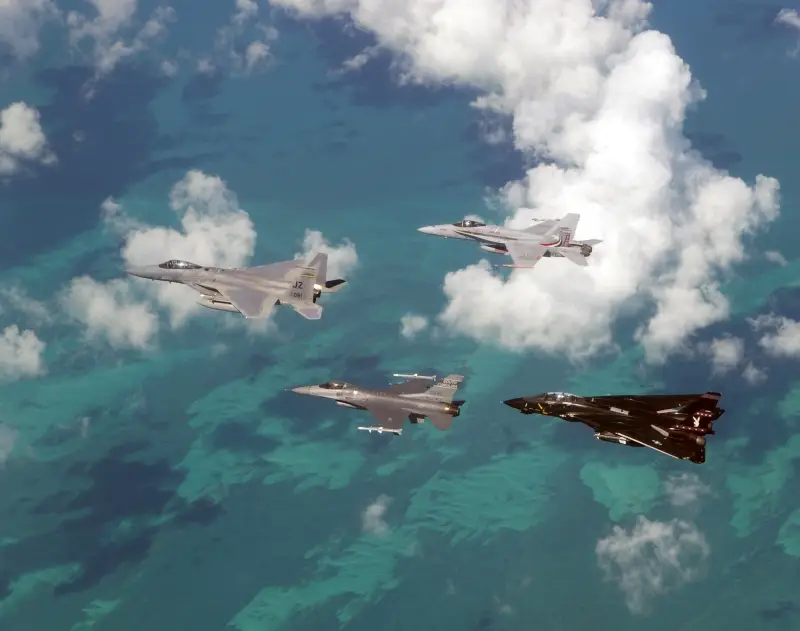
The question is, can these aircraft be kept relevant in the face of the threats we are likely to face?
It all comes down to what you think we'll be doing in the next ten years or so. The argument for the F-22 and F-35 is that something like the F-16, no matter how good, would not be able to operate in a future high-intensity conflict. It is argued that even if it were fully upgraded with the latest electronics, its lack of stealth would still make it vulnerable to modern air defenses.
The opposite would be: today we are not fighting a high-intensity conflict, we are bombing terrorists in the Middle East. An F-16 or A-10 is almost overkill for this scenario. Even in a future conflict, legacy fighters may be able to operate behind a “wall” of fifth-generation aircraft. Once the defenses are neutralized, the F-16 or F/A-18 will still be a perfectly good strike aircraft.
These comparisons tend to overlook one very important factor.
This is not just a battle between fighter A and fighter B, it is a battle between two forces. You may have read that Fighter A once beat Fighter B in some exercise, but that doesn't tell the whole story. Who has the best training? Who has the best tactics? How many hours a month do their pilots train? Who has better command and intelligence?
What about AWACS and tanker support? Who has the best logistics? The best jet in the world can't do much without spare parts. Everything matters, even the smallest detail.
Information